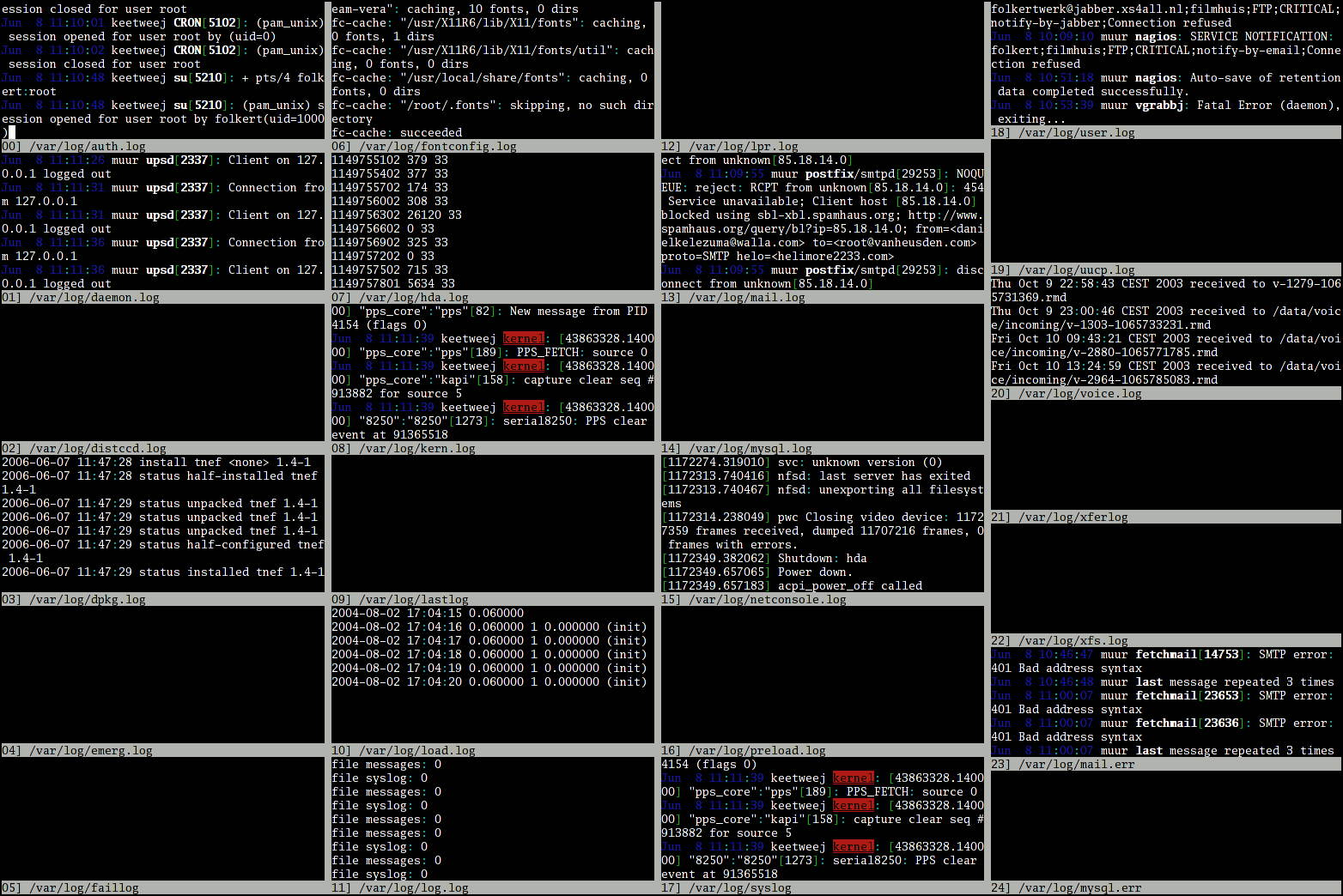131 private links
A program that tries to improve FIGlet; can load FIGlet fonts; supports Unicode input and output, colour fonts and output, and various output formats, including HTML, IRC and ANSI; uses libcaca to produce nice textual effects.

Not exactly a font manager, but a nice program for making large letters out of ordinary text; an astonishing number of different fonts is available.
From the website: "WordGrinder is a word processor for processing words. It is not WYSIWYG. It is not point and click. It is not a desktop publisher. It is not a text editor. It does not do fonts and it barely does styles. What it does do is words. It's designed for writing text. It gets out of your way and lets you type."
Historically one of the preferred text editors; behavior based on editing modes; plenty of plugins and tips to address every possible editing problem.
A work in progress attempt to improve vim, dropping older/unused OS compatibility, improving the codebase readability, modularity and maintainability; it has chances to become the next choice of vim users.
Easy to use, lightweight text editor; no complex keybindings to remember.
(Joe's Own Editor) is a compact text editor written in C; a detailed list of features and missing ones is explicitly reported in the website; this editor is mentioned in several web sources for its capability in handling large files.
A text editor with a drop-down menu facility that make it especially user-friendly.
One of the godfathers of text editors; free long-standing software project; tons of extensions and funcionalities; the biggest drawback (my taste): it needs E-Lisp for being programmed.
Secure and simple terminal sharing.
Terminal multiplexer; born to improve screen; client-server architecture, vi and emacs key-bindings, search in window feature and many more.
A fork of tmux that allows to share the terminal with other users. AFAIK, it connects to a centralized server to establish the connection. Someone may see this inconvenient for privacy issues.
Terminal multiplexer that split a physical terminal between several processes, typically interactive shells.
A text-based window manager and terminal multiplexer; it features enhanced profiles, convenient keybindings, configuration utilities, and toggle-able system status notifications; compatible with screen and tmux.
Periodically runs a command in the console while temporarily clearing the screen content; it makes it easy to check differences between the output of two subsequent commands; it provides "diff" functionality to highlight the changing characters between outputs.
The classical Unix utility that provides a rolling display of top cpu using processes.
Sysdig captures system calls and events from the Linux kernel. You can save, filter, and analyze the data with our CLI or our desktop app. Think of sysdig as strace + tcpdump + htop + iftop + lsof + wireshark for your entire system.
A top-like utility to monitor the sources of power consumption; allows to turn on/off many components; quite useful to track possible power-related issues.
ngrep applies the grep logic to the network layer, allowing to match regular expressions against data payloads of packets; it recognizes IPv4/6, TCP, UDP, ICMPv4/6, IGMP and Raw across Ethernet, PPP, SLIP, FDDI, Token Ring and null interfaces.
A command to open multiple log files in a single terminal window and monitor them in real-time.

